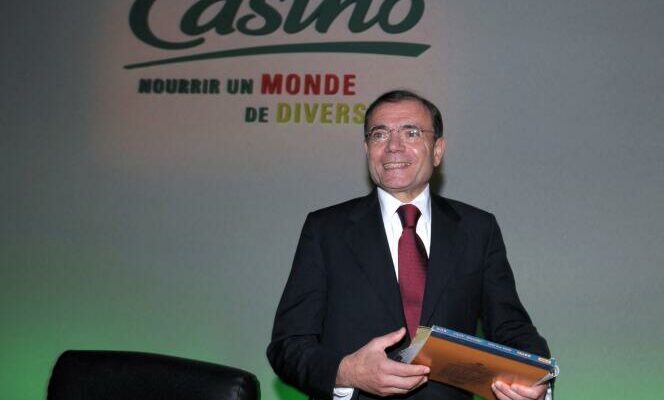Lhe story begins in an ephemeral café chantant, rue des Jardins, in Saint-Etienne, towards the end of the 19th centurye century. It was called The Lyric Casino. The time of ladies’ happiness and the expansion of large-scale commerce. It deploys in France, venturing between Montevideo and Bangkok. At the start of the 2000s, Groupe Casino was a powerhouse, with more than 300,000 employees worldwide, combining prestigious brands (Monoprix, Franprix, etc.), formats (hypermarkets, convenience stores, discount, Web, etc.) and innovations. When he definitively took the reins of the company in 2003, Jean-Charles Naouri, who had become the majority shareholder, made a promise to Antoine Guichard, the grandson of the founder, Geoffroy Guichard: never to let Saint-Etienne down.
This is Jean-Charles Naouri’s last fight. Cornered, forced to sell what remains of his group to Czech businessman Daniel Kretinsky, associated with the president of Fimalac, Marc Ladreit de Lacharrière, he must hold out until March 2024, the date of the effective sale and bailout. financial promised.
But he can no longer escape the financial trap in which his group is trapped. The construction of a cascade of holding companies set up by Pierre Bérégovoy’s former advisor at Bercy threatens at all times to collapse under the weight of its colossal debt of more than 6 billion euros. Ironically, the man who was the architect of the great deregulation of financial markets during the Mitterrand era is today like its expiatory victim.
Price war
Its real troubles began with the attack by an American vulture fund in 2015, which brought the group’s debt problems to light and sent the signal to all its friends on the market. To take control of the group and not lose it as it expanded, Jean-Charles Naouri sophisticated his structure, without ever getting rid of his debt.
He worried about it too late. Lacking new money, he began selling assets, but each time he lost sources of profit. But this is what creditors look at, the ratio of debt to gross profit (Ebitda). To increase its profit, it increased prices, which caused it to lose market share to the benefit of E.Leclerc, Carrefour and Intermarché, who were just waiting for that.
A price war which was exacerbated by inflation, when the rise in rates further increased the burden of its debt. Hence the urgency of new transfers. Each month that passes brings bad news on results and additional asset sales which further deteriorate the situation. Between now and March, it will be increasingly difficult to defend the cradle of Saint-Etienne, which still employs 2,500 people.
